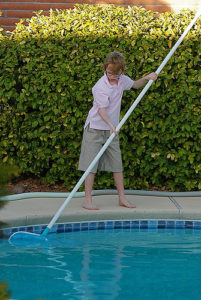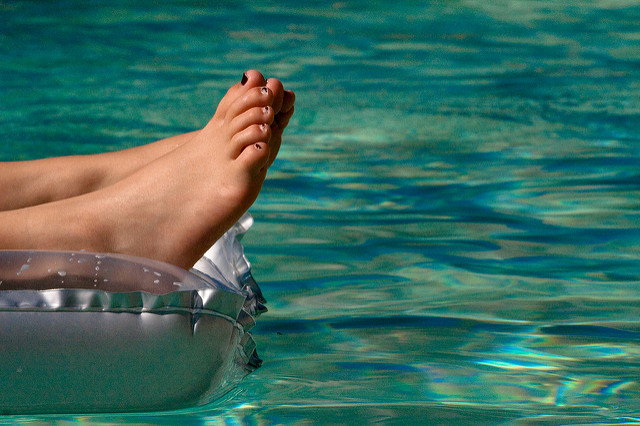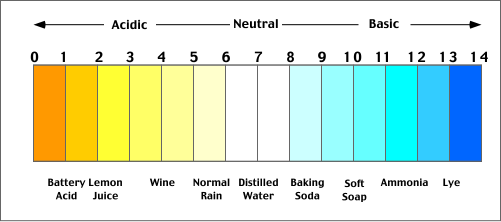Don’t let your pool overwhelm you this summer! Pool maintenance is easy, once you get a handle on which chemicals you should use, the steps needed to keep the pool clean, and the problems to look out for. It’s important to know what to do in case there’s an issue, and while we’d love for you to call us all the time, we know it saves a lot of time to just take care of basic things yourself!
1. The Ideal Balance
pH is important. It’s the balance of acid and base in the water. Your pool should be balanced between 7.4 – 7.6 on the pH scale, and to keep it this way, you have to test it two to three times a week with test strips.
If the pH is too low (and this means too acidic), you would feel the problems – you’d get dry skin and your nose and eyes would burn because of the acidity. Metal implements like ladders would also begin to corrode. If the pH is too high (and this means too basic), you’d see the problems: cloudy water, calcium and scale buildup on the sides and accessories, and maybe even green scum – high pH reduces the effectiveness of chlorine to eliminate algae. The calcium could also clog up the filter.
If the water is testing too high, use a pH decreaser. If it’s too low, use a pH increaser. Have them handy to ensure you’re not caught flat-footed if the water goes either way.
2. Alkalinity
Alkalinity stabilizes the pH. Total alkalinity (TA) is the measurement used to check the strength of the alkaline substances in your pool. TA is like a buffer for the acid, and if it’s too low or too high, the pH can fluctuate either way. The optimal parts per million (PPM) for alkaline substances in the water is between 120 – 150 PPM. A pH decreaser can lower both acidity and alkalinity, but if your alkalinity is too low, an alkalinity increaser can raise alkalinity and the pH. There are easy kits that let you test water alkalinity yourself.
3. Chlorine vs. Bromine
You know what chlorine does: it kills bacteria. The chlorine level, at all times, should be between 1 – 3 PPM. The kind of chlorine that’s best for your pool depends on your particular pool. Come on in, tell us what kind of pool you have, and we can set you up with chlorine tablets of various sizes), skimmer sticks, or granulated chlorine. The effectiveness of the chemicals can deteriorate in the sun, so add them in the evening.
Another chemical that cleans is bromine. Bromine is much more effective at cleaning the pool when the pH or the temperature is too high, but it’s also much more expensive. While more resilient, bromine is usually preferred if your pool situation is atypical. If you choose bromine, it should be at 3 – 5 PPM.
4. Other Signs To Watch For During Pool Maintenance
To keep your pool safe for you and your family, testing the aforementioned levels twice or three times a week is important. Do these things regularly so you don’t run into problems:
- Check the sides of your pool at the water line. Any residue can be an indication of problems.
- Skim debris as often as possible to prevent filtration clogs.
- Get a vacuum that runs constantly, or do it yourself once a week.
- Check the circulation system (pump, pump strainer, filter, and drains) every so often. Water circulation is important to keep every bit filtered and free of unwelcome stuff.
If you run into any problems, give us a call! We can talk you through any issue and recommend the tools you need. Simple pool maintenance can make this season a lot more enjoyable!



